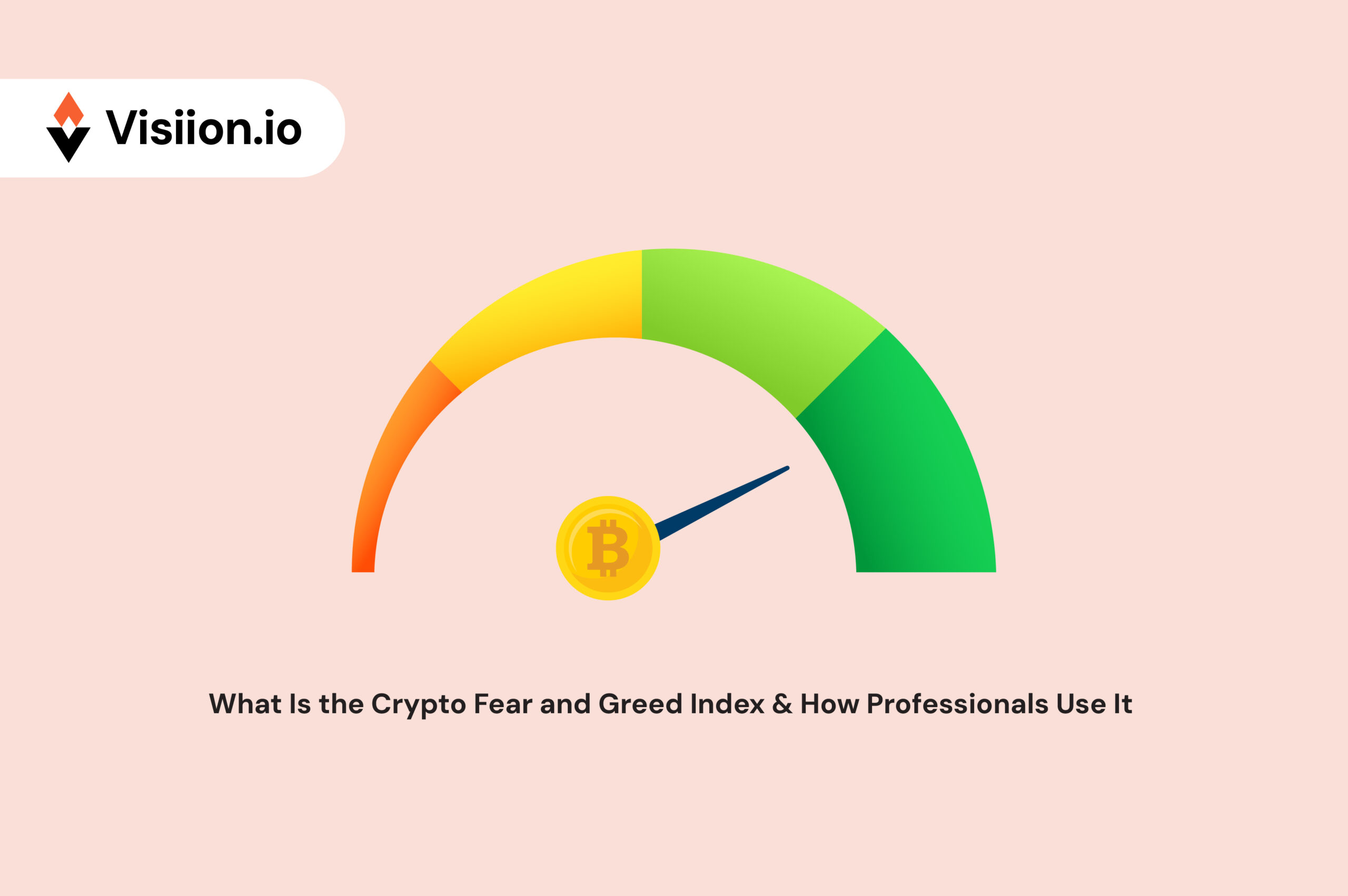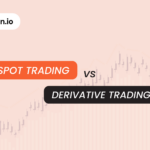When people start trading in the crypto market, they generally start by studying how the market moves. They learn patterns, different indicators, and technical and fundamental aspects of crypto. But to be honest, these are not enough.
While we agree that traders must be aware of how the crypto market moves, it’s more important to understand how it feels. And that’s where crypto Fear and the Green Index come into play. In this article, we will break down its core concept, how it works, and smart traders use it to amplify their win ratio. Let’s begin with some basics.
What Is the Crypto Fear and Greed Index?
The Crypto Fear and Greed Index is a daily market sentiment indicator. It tells you how emotional the crypto market is on any given day. It tells you whether people are panicking or are they being greedy.

This index gives a score between 0 and 100. A lower score means the market is in fear. A higher score signals greed. And that one number often speaks louder than a thousand technical charts.
It’s like a thermometer. It doesn’t predict rain, but it tells you if it’s hot or cold. And when you are trading in crypto, that information is crucial!
Why This Index Was Created?
Cryptocurrency markets are notorious for being fast movers. They are extensively driven by emotion more than most traditional financial markets. The issue here is that instead of relying just on data, a lot of traders follow the crowd. And that’s the reason why we have witnessed explosive growth in meme coins like DOGE and SHIB.
Here, extreme fear leads to panic selling, and extreme greed leads to FOMO buying. Both cause price swings that look irrational from the outside but feel perfectly normal to the traders living through it.
The Fear and Greed index was designed to quantify that collective emotional state. Its goal? Help investors avoid making impulsive decisions based on sentiment alone.
Market veterans have long said that “the market is a mirror.” What you feel, others likely feel, too. The Fear and Greed Index holds that mirror up daily, letting you see the crowd’s face. And sometimes, your own.
How the Index Is Calculated?
The Crypto Fear and Greed Index is built on actual data points. Each day, it pulls inputs from five main sources:
1. Volatility (25%)
If Bitcoin sees unusually high price volatility or a sharp drop, that’s fear. More volatility = more panic.
2. Market Momentum & Volume (25%)
When prices rise and trading volume spikes, that’s usually a sign of greed. Especially if the buying pressure outweighs selling.
3. Social Media (15%)
It scrapes Reddit and Twitter for keywords, hashtags, and general chatter. More posts and higher engagement around bullish terms push the score toward greed.
4. Surveys (15%)
Occasionally, the index runs sentiment polls. These aren’t always active, but when they are, they offer direct insights from retail traders.
5. Bitcoin Dominance (10%)
If Bitcoin’s market dominance increases while altcoins fall, people are getting conservative. That’s fear. When they pile into alts, it often reflects risk-taking behavior—pure greed.
6. Google Trends (10%)
If there’s a sudden spike in searches for things like “Bitcoin crash” or “crypto sell-off,” that drags the index down. But a rise in “how to buy crypto” pushes it up.
The combined score paints a daily picture of sentiment. It’s updated every 24 hours and displayed as a simple dial: left for fear, right for greed.
What Each Score Actually Means?
Let’s break down what the numbers actually tell you:
- 0 to 24: Extreme Fear – People are dumping crypto, often irrationally.
- 25 to 49: Fear – The market is cautious. Buyers are sitting out.
- 50: Neutral – No clear sentiment; the market is stable.
- 51 to 74: Greed – Traders are confident. Possibly overconfident.
- 75 to 100: Extreme Greed – Everyone wants in. Bubbles form here.
Some institutional desks consider these scores a signal to slow down or reassess risk. If greed runs too high, they might tighten risk controls or hedge positions. During fear, they might prepare to enter.
For professionals, these numbers work as an early warning system.
How Does It Influence Trader Behavior?
The Fear and Greed index reflects and shapes traders’ and investors’ sentiments. Retail investors often act emotionally. This is common in almost every market. When the index screams “fear,” people hesitate, sell, or sit on the sidelines. When it flashes “greed,” they rush to buy whatever is pumping.
But here’s the twist—smart money often does the opposite. Fear creates opportunity. Greed creates risk. That’s why experienced traders watch this index closely. They don’t follow it. They trade against it.
Fund managers often describe this index as a proxy for crowd psychology. It helps them gauge the market’s appetite for risk. In some cases, firms use internal versions of this index with even more nuanced inputs like on-chain flows, sentiment analysis from proprietary news feeds, or investor call transcripts.
More importantly, the index works as a filter. When fear dominates, and asset prices collapse, professionals start to study support zones and fundamentals. They look for high-quality coins that get dragged down unfairly. When greed dominates, they often rebalance into stablecoins or safe plays.
Real-Life Examples of the Index in Action
Let’s go back to March 2020.
COVID fears were at their peak. Bitcoin fell below $5,000. The Fear and Greed Index dropped to 8. Retails were panicking like they had never before. But smart traders who bought during that dip made outsized returns when Bitcoin rallied months later.
Let’s fast-forward to November 2021.
Bitcoin hit $69,000. The index hovered between 80 and 95 for weeks. That’s when new retail money poured in. Everyone, from Uber drivers to celebrities, wanted a piece. A few months later, Bitcoin crashed below $40,000.
Another moment: mid-June 2022. The index hit 6—its lowest in years—after the collapse of Terra and Celsius. Yet, long-term investors began quietly accumulating, believing the shakeout had run its course.
Each time, the index showed the pulse. Professionals didn’t act based on it alone, but they didn’t ignore it either.
How Professionals Use the Index in Strategy
Institutional players, prop traders, and experienced crypto investors use the Fear and Greed Index as a secondary data point. Fear and Greed index is not their strategy, but it surely is a part of it. This index helps them refine their entries and exits.
During extreme fear, many portfolio managers start rotating into assets with stronger fundamentals. They reassess narratives and focus on protocols with real adoption or revenue.
When greed takes over, seasoned desks apply tighter risk controls. Sometimes, they reduce leverage, exit highly speculative altcoins, or even open contrarian short positions if other indicators align.
Quants often incorporate this index into algorithmic models. It becomes one of many sentiment indicators, feeding into position-sizing rules, volatility filters, or rebalancing strategies.
For long-term investors, the index helps set re-entry points. Some even create DCA schedules that trigger based on sentiment zones rather than fixed dates.
What unites all these approaches is discipline. Looks, it’s important to remember that this index doesn’t replace technical or macro signals. Instead, it adds a layer to an already existing strategy, a later of emotional intelligence. Numbers are important, but why? The answer is that they reflect how people are acting, or in other words, the emotions of the people. Fear and greed index IS emotion! So, it obviously has to be a part of any trading strategy. It adds emotional intelligence to cold numbers.
What are the Limitations of Fear and Greed Index?
Just like every other tool out there, the Fear and Greed Index, too, has flaws. And it’s very important for traders to know these limitations if they are willing to use them for their trading. Let’s take a look at these limitations:
- It’s Biased Toward Bitcoin
This is by far the biggest limitation. BTC is more than a major player in the crypto market. And hence the data sources lean heavily on BTC. If you trade altcoins, the index may not fully reflect their sentiment.
- It Lags
This is a no-brainer limitation. This index is a lagging indicator. It’s updated at the end of every day. So, if there are any major events happening in between, they might not show up until the next day.
- It’s Emotionally Reactive
Just like the market it measures, it’s emotionally active. You’ll notice that it reacts to the moves and does not predict them.
- Lack of Context
Sometimes greed is justified, especially after a breakout backed by strong fundamentals. The index can mislead you into thinking the market is overheated when it’s simply strong.
Professionals often warn that over-relying on any single metric is a shortcut to overconfidence. The Fear and Greed Index works best when cross-checked with other data.
Wrapping Up
The Crypto Fear and Greed Index is a psychological compass that shows you where the crowd’s head is.
You obviously still need a map. That map is your strategy. Backed by technical, fundamentals, and risk management. You can use platforms like Visiion.io to build a rock-solid strategy and merge the Fear and Greed index into it to make it even more potent.
Look, emotion is a part of trading. And for crypto markets, it’s even more relatable. That’s why professionals analyze emotions and make the right decision. They know that when others feel euphoric, the risk is higher. When others panic, opportunity often emerges.
The Fear and Greed Index helps you maintain that emotional distance. It reminds you that feelings are not unique but a part of the system. And knowing when to trust or fight them. That’s where the edge lies.
Crypto rewards discipline. This index helps sharpen it. It won’t tell you what to buy or sell, but it will help you understand when the market’s mood might be lying to you.










